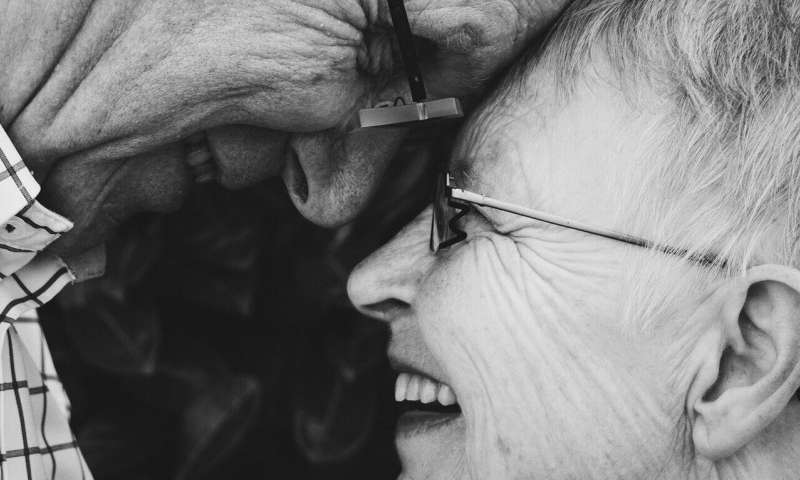

Older adults with a greater sense of hope are more likely to experience better physical health outcomes and better psychological and social well-being, according to a new study co-authored by a Virginia Commonwealth University professor emeritus.
The study, “The role of Hope in subsequent health and well-being for older adults: An outcome-wide longitudinal approach,” will be published in the journal Global Epidemiology. It was led by researchers affiliated with the Human Flourishing Program at Harvard University’s Institute for Quantitative Social Science, and was co-authored by Everett Worthington, Ph.D., emeritus Commonwealth Professor in the Department of Psychology in VCU’s College of Humanities and Sciences.
The researchers analyzed data on nearly 13,000 older adults in the Health and Retirement Study, a longitudinal and nationally representative dataset of adults over age 50.
They found that a greater sense of hope was associated with better physical health and health behavior outcomes on some indicators (such as fewer chronic conditions, a lower risk of cancer, and fewer sleep problems), higher psychological well-being (such as greater life satisfaction and purpose in life), lower psychological distress and better social well-being.
Worthington recently discussed the study, which he says may hold important implications for improving the physical, psychological and social health of the United States’ growing older adult population.
Why is hope so important to our health and well-being?
Hope affects mental health, and it reduces depression and anxiety (and other mental health symptoms). Hope also is associated with motivation to keep trying to live a quality life, and that means doing what we know we should do—and yet, in elderly people, they often don’t physically feel like doing. Namely, hope keeps them exercising, eating healthily, trying to keep weight under control, and maintaining their self-control. Hope keeps people engaged with others because they don’t give up on relationships when a bit of trouble exists. Hope keeps people engaged with religion and religious communities, giving their life a sense of meaning. Maintaining self-control is especially helpful because this prevents an attitude of, “It doesn’t matter what I look like, what I do, and whether I stay active.”
Hope gives people meaning. It yields a more positive mood; fewer mental health symptoms; more healthy exercise, eating and weight; more powerful self-control; more social engagement with family and friends; and practice of religion in religious communities.
Is the inverse true, as well? Does hopelessness lead to lowered physical, psychological and social well-being?
Yes, the inverse is probably true as well. Hopelessness affects mood, mental health symptoms, giving up on healthy exercise, eating, weight control, self-control, social engagement, and religion. Hopelessness leads to withdrawal from things that give life meaning.
In what ways could this finding—that hope is correlated with positive health outcomes—be applied in the real world? What strategies would you recommend to someone who wants to be more hopeful?
Hope is not the same as optimism. Optimism is being positive about outcomes. Hope, however, isn’t always sure that the outcome will be positive, but it keeps people engaged and moving forward.
Hope has three parts: willpower to change, waypower to change, and waitpower when we don’t see change happening. As people age, there is a definite shift in the type of hope they experience. At 30, the world is in front of us at our feet. We mostly experience hope as a sense of agency (i.e., that I can affect change) and pathways (i.e., I have lots of ways to change things, so I must stay resilient to use the right strategy at the right time).
When people in their 30s to early 60s encounter hardships, mostly they are about external barriers that keep getting in their paths. So resilience in agency and pathways is important to maintaining hope that keeps people striving toward their goals. But in older people—and this study started with people age 66 and looked at them over time—many of the obstacles are insolvable. There are health challenges that are not likely to be healed. There are losses of significant people. There are collapses in social networks, especially as people retire and might lose functioning and experience impaired mobility and freedom. They need more waitpower hope. That is, they need the type of hope that allows them to persevere even when they do not think the challenges can be met effectively. They need to persevere when the goal is to not die as quickly if they have some terminal disease (like, for example, Parkinson’s).
Good strategies are to cultivate resilience and stay mentally flexible. Also, as we age we need sources of strength that help us persevere. Those turn out to be things like stable romantic relationships, stable friends and support networks, religion and religious communities, and habits that keep us physically active.
The U.S. population is growing older, with an estimated one in five people being retirement age by 2030. What impact do you hope this study has for that population?
This Health and Retirement Study is getting at the experiences of those on the leading edge of boomers. If boomers can be encouraged to maintain, and even strengthen hope, this can lead to better mental and physical health. That, in turn, will reduce health care costs by delaying death for many. That will make a large public health impact.
Source: Read Full Article